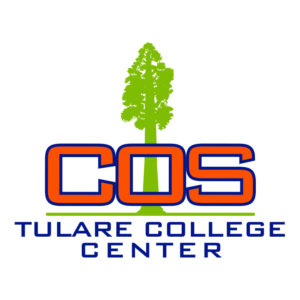 The Tulare Irrigation District held its board of directors meeting on Tuesday, November 9, 2021 at its rural Tulare headquarters and on Zoom. The camera in the boardroom is kind of an overhead affair and it gives a pretty good view. You can almost tell who is speaking most of the time and of course if you know the sound of their voices it gets easier.
The Tulare Irrigation District held its board of directors meeting on Tuesday, November 9, 2021 at its rural Tulare headquarters and on Zoom. The camera in the boardroom is kind of an overhead affair and it gives a pretty good view. You can almost tell who is speaking most of the time and of course if you know the sound of their voices it gets easier.
Chairman David Bixler called the meeting to order at 9:05am and General Manager Aaron Fukuda reported a change in the agenda due to a late minute need for a resolution to lease some equipment. The board approved. There was no public comment worth mentioning and the minutes were approved.
Water Master Marco Crenshaw gave his report saying Lake Millerton is dropping slightly in storage. I live relatively near Millerton and it rained hard last night so maybe the San Joaquin River watershed picked up some gains. Lake Kaweah is maintaining its level. Crenshaw studies the weather over the Pacific Ocean saying cooler water near the equator influences the Jet Stream. That could in turn move the blob off the coast of North America and allow more storms to dip further south into California. No promises but a little hope is nice.*
Fukuda reported the US Bureau of Reclamation upped the Friant allocation from 20 to 25 percent. However, that extra amount can’t be carried over and must be used by the end of February.
Superintendent Wayne Fox gave his report saying crews are fighting weeds and trimming trees. He said there was some work with City of Tulare on road crossings and road repairs that impact TID facilities.
Next Controller Kathi Artis gave the financial reports and TID is staying fiscally solvent yet again. The board approved her report and paid its bills. There was a net loss during the past water year due mostly to the fact there was no water. Water is an important input for an irrigation district. TID participates in the Local Agency Investment Fund. LAIF isn’t paying much interest and it was said the returns from LAIF have been declining consistently for some time now. There is also the occasional fear Sacramento might abscond with the LAIF money during a self-inflicted budget crisis. In unrelated news it was pointed out China makes 95 percent of all the toys in the world but Lego makes the other five percent in Denmark.
The Audit
CPA Joe Mastro gave the audit report and he’s gotten pretty good at it over the years. His reports tend to get to the point and are not the driest of dry verbal drone these things can sometimes be. I’m writing here from the viewpoint of someone who has sat through some mind numbing audit reports. I also know if that was my money or money I’m responsible for being discussed it’d be a lot more interesting. Maybe sort of like college women’s basketball. That’s not something I follow but now and then if it’s Fresno State ladies it’ll catch my eye for a bit. Kind of like as I was writing this part of the report it was said TID’s “postemployment liabilities are high.” If I understand the amount owned long-term for the employee pension is at just under $6 million. I think it was Director Dave Martin who asked if these expense will go down and it think it was Director Rick Borges who said the answer would be a morbid yes. At the end Mastro asked if the board wanted more detail or less and offered to discuss it further if you call him. I’m telling you that was the acme of the self-aware CPA. One of the directors offered to send Mastro back the binders he provided with the audit reports stipulating the cost of the binders and shipping be deducted from the final bill. This is what I’m talking about. Farmers are not in a business where opinions separated from facts are viable. They keep a close eye on expenses because there are so many variables out of their control. The board accepted the audit report.
catch my eye for a bit. Kind of like as I was writing this part of the report it was said TID’s “postemployment liabilities are high.” If I understand the amount owned long-term for the employee pension is at just under $6 million. I think it was Director Dave Martin who asked if these expense will go down and it think it was Director Rick Borges who said the answer would be a morbid yes. At the end Mastro asked if the board wanted more detail or less and offered to discuss it further if you call him. I’m telling you that was the acme of the self-aware CPA. One of the directors offered to send Mastro back the binders he provided with the audit reports stipulating the cost of the binders and shipping be deducted from the final bill. This is what I’m talking about. Farmers are not in a business where opinions separated from facts are viable. They keep a close eye on expenses because there are so many variables out of their control. The board accepted the audit report.
Engineering Report
Engineer Jeremy Barroll reported on a problem with canals, pipelines and property boundaries. There is land in the district without access to surface supplies. If I understand district policy, TID is required to provide service to the property line. What happens when a 1,000 acre parcel is subdivided? Two turnouts might have served that land but a new turnout could well be necessary since the far side of the original property might be land locked. There is one situation where Barroll will do an initial pipeline package and Provost & Pritchard will sign off on it. Fukuda said pretty soon Barroll will get his own engineer’s stamp and Fukuda could review the design but he doesn’t have time. This way Barroll will have one of these under his belt by the time he gets his own stamp. The board approved bringing P&P on board with this.
stamp and Fukuda could review the design but he doesn’t have time. This way Barroll will have one of these under his belt by the time he gets his own stamp. The board approved bringing P&P on board with this.
SGMA
Fukuda said East Kaweah GSA has put in place an allocation retroactive to October 1st of this year. Assessed lands get a .85 a/f allocation. There is a planned overdraft of .3 a/f and a temporary .50 a/f. This is based on ET instead of pumping. One bit of saving grace is very little frost water will count towards this because there is so little evaporation during a freeze. The fees and penalties for exceeding this allocation are of great concern. I’ve heard $500 per acre foot as a figure. Landowners are a bit shocked by this announcement. It would do EKGSA well to spell this clearly.
Fukuda said the Greater Kaweah GSA has yet to set an allocation but there is the provision of an emergency allocation cap if needed. It was noted there is a possibility of legal pushback on the Mid Kaweah GSA (TID is in Mid Kaweah) plans for recharge and fees. A comment by someone at GKGSA who claimed it was on advice of an attorney and not a question didn’t like the MIDGSA plan. That raised some red flags. It sounds like MKGSA and EKGSA have drawn the allocation cap line and GKGSA hasn’t yet done so. The immediate response is to get the water budget up to date and complete the subbasin MODFLOW model. Once that happens there will be a framework for implementing a water accounting plan.
model. Once that happens there will be a framework for implementing a water accounting plan.
Engineer James Fisher works on MKGSA matters and reported the Land IQ data is now a year old and that gives enough of a cycle to start making some determinations. There will be a crop ET breakdown by fields. Growers will be able to request ET figures based on APNs. They expect a healthy demand for this information. Fukuda said so far most folks have been pretty dang impressed by the accuracy of the reports. Good for them.
Fukuda said he and the engineering staff met with a group of students from College of the Sequoias Irrigation Academy and he was blown away. All of the students already knew about SGMA and had very good questions. That’s a testimony to Professor Charles Abee and his associate Cosmos Costales who run this much needed service.
In further SGMA news Fukuda presented the board with the latest Emergency Policy, Version 11. The recommendation is 2.5 a/f for a pumping cap. Whether to use ET or metered readings or what alternatives may become viable still needs to be determined. It could be a cross of all of these. To prevent confusion the first year will be ET based. That makes sense in as much as Land IQ is already in place and can fully provide the needed data. Fukuda said if 2.5 a/f is too high for 2022 there will be adjustments. He said 2022 is the year to get everyone with the program. There is talk of having to take some land out of production but if the amount of pumping allowed goes down from 2.5 a/f this introductory year thing might never fully take off before breaking down. In the future if the allocation is too high there will be a reduction. If it gets very wet it could go up. As for fees and penalties there will be a cost per a/f ($500?) and reduction of pumping in the future.
makes sense in as much as Land IQ is already in place and can fully provide the needed data. Fukuda said if 2.5 a/f is too high for 2022 there will be adjustments. He said 2022 is the year to get everyone with the program. There is talk of having to take some land out of production but if the amount of pumping allowed goes down from 2.5 a/f this introductory year thing might never fully take off before breaking down. In the future if the allocation is too high there will be a reduction. If it gets very wet it could go up. As for fees and penalties there will be a cost per a/f ($500?) and reduction of pumping in the future.
Fukuda said there was a good deal of resistance from consultants to transferability. It was called a hindrance to water marketing. He said there could be chaos. The current proposal is to allow landowners to move water within the GSA to their own parcels, not selling it to others even in the GSA. Water going from one owner to another will have to go through the Water Marketing channel.
Also, the emergency policy is only approved for one year at a time. That will allow growers to plan for the future and adapt. Director Mike Thomas said he felt $500 is high for a first time penalty while people learn how to work the new rules. Fukuda explained the amount is progressive and his explanation didn’t come across as crystal clear to me, so to speak. I didn’t have the documents displayed on the screen to study but it looks as though there are different factors for land with surface supplies and that without. The good news is it will take three months of comments before anything is carved in stone.
There will soon be a MKGSA water dashboard growers can view online that will show ground and surface water allocations and usage. It has a lot of features and staff from P&P will be available to help. In fact they’re going to produce a how to use video. Fukuda said this is version Mach One and the Greater Kaweah GSA is interested in sharing some of the $150,000 cost. This is based on the Irrigated Lands Program. East Kaweah has a decent amount of land not in that program so it will evaluate this dashboard concept and get back to everyone. This is being developed by United Tracking Systems of Bakersfield and Fukuda said he has been very impressed with them. There is a MKGSA meeting this afternoon where this dashboard will be presented. Fukuda said this dashboard, the implementation of the pumping cap and the hoped ability to take surface water should all come together in March.
amount of land not in that program so it will evaluate this dashboard concept and get back to everyone. This is being developed by United Tracking Systems of Bakersfield and Fukuda said he has been very impressed with them. There is a MKGSA meeting this afternoon where this dashboard will be presented. Fukuda said this dashboard, the implementation of the pumping cap and the hoped ability to take surface water should all come together in March.
Friant
Fukuda said there is now a contract for the construction of Friant Kern Canal repairs and GSI is monitoring subsidence with the Eastern Tule GSA. That’s a good thing as there has been at least a half a foot of subsidence in the past two years. That was about all he had to say on that matter.
McKay Point & Seaborn Reservoirs
Tulare County has been sent 10 chapters of enviro documents with I don’t know how many more to go. Seven chapters have been reviewed and they are working on air quality and the appendices. The Seaborn Reservoir has a moat around it with habitat. On a wet year the reservoir fills up spills over. Martin was concerned about creating new habitat that could be in front of growers for surface supplies. There will be a meeting with P&P to talk about the current CEQA coverage for the area.
Michael McKinney of Capitol Core Group reported there is a BRIC grant that McKay Point could apply for. Capital Core is a company retained by TID to help bring $12 million in grants and funding to the project. The Building Resilient Infrastructure and Communities grant has been able to get drought included. McKinney said these projects could also qualify as flood control. It is now called the “2021 Drought and Flood Mitigation Program at McKay Point” and delivers $3.5 million to the coffers. I think I got that name correct.
McKinney said FEMA and state officials are being asked to provide support. If this is implemented it will be the first of its kind west of the Mississippi River so it’s large in the state’s line of sight. Capital Core will also write the grants as part of its service. Fukuda said he just doesn’t have the time to get that part together. McKinney said Congressman David Valadao has been working hard to more support and even an earmark for this project.
GM Report
Fukuda said the Collaborative Action Plan is moving along. This is the interaction between ag, government, water agencies, environment and disadvantaged communities being led by Tim Quinn. This group of folks have been willing to sit down together and define a problem and solution they can all agree upon for water in the Central Valley. He said this is an all hands on deck exercise. He said he’s talking to enviros at 9pm on Saturday night and for the first time folks are starting to realize if you want habitat you have to have a water source. He said he’s on the verge of being shocked at the high level of cooperation taking place. One of the advantages of CAP is so many of the NGOs aren’t located in the Valley. They want to help but they don’t know the area and now they have an opportunity to get to learn.
Fukuda has been holding grower workshops and there has been some follow up. However there hasn’t been much interest in a 218 election. He said currently the district doesn’t have the reserves to take advantage of a wet year with water purchases. Martin said he received a review from one of the growers who said, “Aaron is one – Let’s Go Brandon – smart dude.” Good for him.
Lights, Camera, Action Items
The board had to pass a resolution to allow TID to continue meeting online and that was approved. The next action item was a resolution to install solar at the district headquarters to reduce the power bill. This required a resolution to quality for a USBR grant. The board approved. This makes more sense when you recall Fukuda has recently purchased a battery powered Ford Mustang. Jason Phillips, CEO of Friant also purchased a Tesla but the jungle drums speak of him selling it.
The last action item was a letter of collaboration with UC Davis for what the agenda stated was a NSF Project. It wasn’t clear whose checks were bouncing until Fukuda explained this was something to do with the National Fisheries Service. It won’t cost TID anything to sign a letter of support of UC Davis’ attempts to gather more information about fish that could benefit all around. And that passed.
The added agenda item was the resolution to get a newer vehicle leased. That passed as well. It’s fairly rare a resolution is required to enter into a lease but this had something to do government clean air requirements.
Director Reports
Borges represents TID on the Friant board and he said the Eastern Tule GSA has paid Friant more than $3 million for subsidence repair costs. He said there is more coming as pumping fees and other sources are gathered. He also reported the recent storm triggered a water quality sampling on a foothill ditch under the Irrigated Lands Program. There hasn’t been much sampling of storm flows because there hasn’t been much in the way of storms until October.
Martin didn’t have a report and Thomas said there has been a good deal of concern about frost water allocations, so sounds like they are going to have good news about the ET and frost correlation. I wasn’t sure which project he referred to but they are pulling out old pipe and putting in new somewhere.
Director Scott Rogers said there was a water marketing workshop recently. He said Martin was there but Martin couldn’t recall at first which meeting it was but it came back to him. To be fair he goes to a lot of meetings.
And that was it for open session. The meeting went into closed session for five items at 12:07pm. Go be good to each other.
DISCLAIMER OF RESPONSIBILITY; Waterwrights strives to provide clients with the most complete, up-to-date, and accurate information available. Nevertheless, Waterwrights does not serve as a guarantor of the accuracy or completeness of the information provided, and specifically disclaims any and all responsibility for information that is not accurate, up- to-date, or complete. Waterwrights’ clients therefore rely on the accuracy, completeness and timeliness of information from Waterwrights entirely at their own risk. The opinions expressed in this report are those of the author and do not represent any advertisers or third parties.
to-date, or complete. Waterwrights’ clients therefore rely on the accuracy, completeness and timeliness of information from Waterwrights entirely at their own risk. The opinions expressed in this report are those of the author and do not represent any advertisers or third parties.
*Given we can’t predict the weather with any accuracy more than a week or two in the future what if the government overestimates the impact of climate change and it hurts someone’s business or home who will step up and make it right?
ALL RIGHTS RESERVED. Copyright 2021 by WaterWrights.net/DAW
TULARE IRRIGATION DISTRICT
6826 Ave 240, Tulare, CA 93274 Office: 559/686-3425
Board: David G. Bixler- President, Richard S. Borges, Jr.-Vice President, Scott Rogers, Dave Martin & Michael Thomas
Staff: Aaron Fukuda-General Manager, Jeremy Barroll-Engineer, Kathi Artis–District Controller, Wayne Fox–Superintendent, Marco Crenshaw–District Watermaster & Alex Peltzer-Attorney.
About: The Tulare Irrigation District was organized September 21, 1889. The original proposal for the formation of an irrigation district covering 219,000 acres, extending from the Sierra Nevada foothills to Tulare Lake, was eventually reduced to 32,500 acres. The District continued in this status until January of 1948 when the so-called Kaweah Lands” (approximately 11,000 acres) were annexed. In October of 1948, approximately 31,000 acres, compromising the area served by the Packwood Canal Company were annexed to the District. A U.S. Bureau of Reclamation contract was signed in 1950 providing an annual supply of 30,000 acre-feet of Class 1 water, and up to 141,000 acre-feet of Class 2 water from the Friant-Kern Canal. The District and the Kaweah Delta Water Conservation District have coordinated efforts to enhance the recharge of groundwater within the Kaweah Basin. During high flow times KDWCD may use the recharge basins with the District for recharge purposes. Further, KDWCD has historically provided for a financial incentive program through which the District sustains the level of groundwater recharge from supply sources into the District. This historical program was recently reinstated by both districts in lieu of the District’s plans to concrete-line this canal to conserve the surface water. TID is a member of the Mid Kaweah GSA DWR#-5-022.11
Tulare Irrigation District November 9, 2021
By Don A. Wright
The Tulare Irrigation District held its board of directors meeting on Tuesday, November 9, 2021 at its rural Tulare headquarters and on Zoom. The camera in the boardroom is kind of an overhead affair and it gives a pretty good view. You can almost tell who is speaking most of the time and of course if you know the sound of their voices it gets easier.
The Meeting
Chairman David Bixler called the meeting to order at 9:05am and General Manager Aaron Fukuda reported a change in the agenda due to a late minute need for a resolution to lease some equipment. The board approved. There was no public comment worth mentioning and the minutes were approved.
Water Master Marco Crenshaw gave his report saying Lake Millerton is dropping slightly in storage. I live relatively near Millerton and it rained hard last night so maybe the San Joaquin River watershed picked up some gains. Lake Kaweah is maintaining its level. Crenshaw studies the weather over the Pacific Ocean saying cooler water near the equator influences the Jet Stream. That could in turn move the blob off the coast of North America and allow more storms to dip further south into California. No promises but a little hope is nice.*
Fukuda reported the US Bureau of Reclamation upped the Friant allocation from 20 to 25 percent. However, that extra amount can’t be carried over and must be used by the end of February.
Superintendent Wayne Fox gave his report saying crews are fighting weeds and trimming trees. He said there was some work with City of Tulare on road crossings and road repairs that impact TID facilities.
Next Controller Kathi Artis gave the financial reports and TID is staying fiscally solvent yet again. The board approved her report and paid its bills. There was a net loss during the past water year due mostly to the fact there was no water. Water is an important input for an irrigation district. TID participates in the Local Agency Investment Fund. LAIF isn’t paying much interest and it was said the returns from LAIF have been declining consistently for some time now. There is also the occasional fear Sacramento might abscond with the LAIF money during a self-inflicted budget crisis. In unrealted news it was pointed out China makes 95 percent of all the toys in the world but Lego makes the other five percent in Denmark.
The Audit
CPA Joe Mastro gave the audit report and he’s gotten pretty good at it over the years. His reports tend to get to the point and are not the driest of dry verbal drone these things can sometimes be. I’m writing here from the viewpoint of someone who has sat through some mind numbing audit reports. I also know if that was my money or money I’m responsible for being discussed it’d be a lot more interesting. Maybe sort of like college women’s basketball. That’s not something I follow but now and then if it’s Fresno State ladies it’ll catch my eye for a bit. Kind of like as I was writing this part of the report it was said TID’s “postemployment liabilities are high.” If I understand the amount owned long-term for the employee pension is at just under $6 million. I think it was Director Dave Martin who asked if these expense will go down and it think it was Director Rick Borges who said the answer would be a morbid yes. At the end Mastro asked if the board wanted more detail or less and offered to discuss it further if you call him. I’m telling you that was the acme of the self-aware CPA. One of the directors offered to send Mastro back the binders he provided with the audit reports stipulating the cost of the binders and shipping be deducted from the final bill. This is what I’m talking about. Farmers are not in a business where opinions separated from facts are viable. They keep a close eye on expenses because there are so many variables out of their control. The board accepted the audit report.
Engineering Report
Engineer Jeremy Barroll reported on a problem with canals, pipelines and property boundaries. There is land in the district without access to surface supplies. If I understand district policy, TID is required to provide service to the property line. What happens when a 1,000 acre parcel is subdivided? Two turnouts might have served that land but a new turnout could well be necessary since the far side of the original property might be land locked. There is one situation where Barroll will do an initial pipeline package and Provost & Pritchard will sign off on it. Fukuda said pretty soon Barroll will get his own engineer’s stamp and Fukuda could review the design but he doesn’t have time. This way Barroll will have one of these under his belt by the time he gets his own stamp. The board approved bringing P&P on board with this.
SGMA
Fukuda said East Kaweah GSA has put in place an allocation retroactive to October 1st of this year. Assessed lands get a .85 a/f allocation. There is a planned overdraft of .3 a/f and a temporary .50 a/f. This is based on ET instead of pumping. One bit of saving grace is very little frost water will count towards this because there is so little evaporation during a freeze. The fees and penalties for exceeding this allocation are of great concern. I’ve heard $500 per acre foot as a figure. Landowners are a bit shocked by this announcement. It would do EKGSA well to spell this clearly.
Fukuda said the Greater Kaweah GSA has yet to set an allocation but there is the provision of an emergency allocation cap if needed. It was noted there is a possibility of legal pushback on the Mid Kaweah GSA (TID is in Mid Kaweah) plans for recharge and fees. A comment by someone at GKGSA who claimed it was on advice of an attorney and not a question didn’t like the MIDGSA plan. That raised some red flags. It sounds like MKGSA and EKGSA have drawn the allocation cap line and GKGSA hasn’t yet done so. The immediate response is to get the water budget up to date and complete the subbasin MODFLOW model. Once that happens there will be a framework for implementing a water accounting plan.
Engineer James Fisher works on MKGSA matters and reported the Land IQ data is now a year old and that gives enough of a cycle to start making some determinations. There will be a crop ET breakdown by fields. Growers will be able to request ET figures based on APNs. They expect a healthy demand for this information. Fukuda said so far most folks have been pretty dang impressed by the accuracy of the reports. Good for them.
Fukuda said he and the engineering staff met with a group of students from College of the Sequoias Irrigation Academy and he was blown away. All of the students already knew about SGMA and had very good questions. That’s a testimony to Professor Charles Abee and his associate Cosmos Costales who run this much needed service.
In further SGMA news Fukuda presented the board with the latest Emergency Policy, Version 11. The recommendation is 2.5 a/f for a pumping cap. Whether to use ET or metered readings or what alternatives may become viable still needs to be determined. It could be a cross of all of these. To prevent confusion the first year will be ET based. That makes sense in as much as Land IQ is already in place and can fully provide the needed data. Fukuda said if 2.5 a/f is too high for 2022 there will be adjustments. He said 2022 is the year to get everyone with the program. There is talk of having to take some land out of production but if the amount of pumping allowed goes down from 2.5 a/f this introductory year thing might never fully take off before breaking down. In the future if the allocation is too high there will be a reduction. If it gets very wet it could go up. As for fees and penalties there will be a cost per a/f ($500?) and reduction of pumping in the future.
Fukuda said there was a good deal of resistance from consultants to transferability. It was called a hindrance to water marketing. He said there could be chaos. The current proposal is to allow landowners to move water within the GSA to their own parcels, not selling it to others even in the GSA. Water going from one owner to another will have to go through the Water Marketing channel.
Also, the emergency policy is only approved for one year at a time. That will allow growers to plan for the future and adapt. Director Mike Thomas said he felt $500 is high for a first time penalty while people learn how to work the new rules. Fukuda explained the amount is progressive and his explanation didn’t come across as crystal clear to me, so to speak. I didn’t have the documents displayed on the screen to study but it looks as though there are different factors for land with surface supplies and that without. The good news is it will take three months of comments before anything is carved in stone.
There will soon be a MKGSA water dashboard growers can view online that will show ground and surface water allocations and usage. It has a lot of features and staff from P&P will be available to help. In fact they’re going to produce a how to use video. Fukuda said this is version Mach One and the Greater Kaweah GSA is interested in sharing some of the $150,000 cost. This is based on the Irrigated Lands Program.East Kaweah has a decent amount of land not in that program so it will evaluate this dashboard concept and get back to everyone. This is being developed by United Tracking Systems of Bakersfield and Fukuda said he has been very impressed with them. There is a MKGSA meeting this afternoon where this dashboard will be presented. Fukuda said this dashboard, the implementation of the pumping cap and the hoped ability to take surface water should all come together in March.
Friant
Fukuda said there is now a contract for the construction of Friant Kern Canal repairs and GSI is monitoring subsidence with the Eastern Tule GSA. That’s a good thing as there has been at least a half a foot of subsidence in the past two years. That was about all he had to say on that matter.
McKay Point & Seaborn Reservoirs
Tulare County has been sent 10 chapters of enviro documents with I don’t know how many more to go. Seven chapters have been reviewed and they are working on air quality and the appendices. The Seaborn Reservoir has a moat around it with habitat. On a wet year the reservoir fills up spills over. Martin was concerned about creating new habitat that could be in front of growers for surface supplies. There will be a meeting with P&P to talk about the current CEQA coverage for the area.
Michael McKinney of Capitol Core Group reported there is a BRIC grant that McKay Point could apply for. Capital Core is a company retained by TID to help bring $12 million in grants and funding to the project. The Building Resilient Infrastructure and Communities grant has been able to get drought included. McKinney said these projects could also qualify as flood control. It is now called the “2021 Drought and Flood Mitigation Program at McKay Point” and delivers $3.5 million to the coffers. I think I got that name correct.
McKinney said FEMA and state officials are being asked to provide support. If this is implemented it will be the first of its kind west of the Mississippi River so it’s large in the state’s line of sight. Capital Core will also write the grants as part of its service. Fukuda said he just doesn’t have the time to get that part together. McKinney said Congressman David Valadao has been working hard to more support and even an earmark for this project.
GM Report
Fukuda said the Collaborative Action Plan is moving along. This is the interaction between ag, government, water agencies, environment and disadvantaged communities being led by Tim Quinn. This group of folks have been willing to sit down together and define a problem and solution they can all agree upon for water in the Central Valley. He said this is an all hands on deck exercise. He said he’s talking to enviros at 9pm on Saturday night and for the first time folks are starting to realize if you want habitat you have to have a water source. He said he’s on the verge of being shocked at the high level of cooperation taking place. One of the advantages of CAP is so many of the NGOs aren’t located in the Valley. They want to help but they don’t know the area and now they have an opportunity to get to learn.
Fukuda has been holding grower workshops and there has been some follow up. However there hasn’t been much interest in a 218 election. He said currently the district doesn’t have the reserves to take advantage of a wet year with water purchases. Martin said he received a review from one of the growers who said, “Aaron is one – Let’s Go Brandon – smart dude.” Good for him.
Lights, Camera, Action
The board had to pass a resolution to allow TID to continue meeting online and that was approved. The next action item was a resolution to install solar at the district headquarters to reduce the power bill. This required a resolution to quality for a USBR grant. The board approved. This makes more sense when you recall Fukuda has recently purchased a battery powered Ford Mustang. Jason Phillips, CEO of Friant also purchased a Tesla but the jungle drums speak of him selling it.
The last action item was a letter of collaboration with UC Davis for what the agenda stated was a NSF Project. It wasn’t clear whose checks were bouncing until Fukuda explained this was something to do with the National Fisheries Service. It won’t cost TID anything to sign a letter of support of UC Davis’ attempts to gather more information about fish that could benefit all around. And that passed.
The added agenda item was the resolution to get a newer vehicle leased. That passed as well. It’s fairly rare a resolution is required to enter into a lease but this had something to do government clean air requirements.
Director Reports
Borges represents TID on the Friant board and he said the Eastern Tule GSA has paid Friant more than $3 million for subsidence repair costs. He said there is more coming as pumping fees and other sources are gathered. He also reported the recent storm triggered a water quality sampling on a foothill ditch under the Irrigated Lands Program. There hasn’t been much sampling of storm flows because there hasn’t been much in the way of storms until October.
Martin didn’t have a report and Thomas said there has been a good deal of concern about frost water allocations, so sounds like they are going to have good news about the ET and frost correlation. I wasn’t sure which project he referred to but they are pulling out old pipe and putting in new somewhere.
Director Scott Rogers said there was a water marketing workshop recently. He said Martin was there but Martin couldn’t recall at first which meeting it was but it came back to him. To be fair he goes to a lot of meetings.
And that was it for open session. The meeting went into closed session for five items at 12:07pm. Go be good to each other.
DISCLAIMER OF RESPONSIBILITY; Waterwrights strives to provide clients with the most complete, up-to-date, and accurate information available. Nevertheless, Waterwrights does not serve as a guarantor of the accuracy or completeness of the information provided, and specifically disclaims any and all responsibility for information that is not accurate, up-to-date, or complete. Waterwrights’ clients therefore rely on the accuracy, completeness and timeliness of information from Waterwrights entirely at their own risk. The opinions expressed in this report are those of the author and do not represent any advertisers or third parties.
*Given we can’t predict the weather with any accuracy more than a week or two in the future what if the government overestimates the impact of climate change and it hurts someone’s business or home who will step up and make it right?
ALL RIGHTS RESERVED. Copyright 2021 by WaterWrights.net/DAW
TULARE IRRIGATION DISTRICT
6826 Ave 240, Tulare, CA 93274 Office: 559/686-3425
Board: David G. Bixler- President, Richard S. Borges, Jr.-Vice President, Scott Rogers, Dave Martin & Michael Thomas
Staff: Aaron Fukuda-General Manager, Jeremy Barroll-Engineer, Kathi Artis–District Controller, Wayne Fox–Superintendent, Marco Crenshaw–District Watermaster & Alex Peltzer-Attorney.
About: The Tulare Irrigation District was organized September 21, 1889. The original proposal for the formation of an irrigation district covering 219,000 acres, extending from the Sierra Nevada foothills to Tulare Lake, was eventually reduced to 32,500 acres. The District continued in this status until January of 1948 when the so-called Kaweah Lands” (approximately 11,000 acres) were annexed. In October of 1948, approximately 31,000 acres, compromising the area served by the Packwood Canal Company were annexed to the District. A U.S. Bureau of Reclamation contract was signed in 1950 providing an annual supply of 30,000 acre-feet of Class 1 water, and up to 141,000 acre-feet of Class 2 water from the Friant-Kern Canal. The District and the Kaweah Delta Water Conservation District have coordinated efforts to enhance the recharge of groundwater within the Kaweah Basin. During high flow times KDWCD may use the recharge basins with the District for recharge purposes. Further, KDWCD has historically provided for a financial incentive program through which the District sustains the level of groundwater recharge from supply sources into the District. This historical program was recently reinstated by both districts in lieu of the District’s plans to concrete-line this canal to conserve the surface water. TID is a member of the Mid Kaweah GSA DWR#-5-022.11

































